Joseph "Lick" Liklider: "Intergalactic computer network" and "Symbiosis of man and computer"
“Any person and any company that uses a computer interactively should be grateful to Lik.”
Bob Taylor

Liklider was interested in the question of how consciousness extracts meaning from what it heard.
In the field of psychoacoustics, Liklider appeared in 1951 with the article “Duplex Theory of Pitch Perception” , which was then reprinted and quoted hundreds of times. This article has laid the foundation for speech recognition technology. He was elected President of the Acoustic Society of the United States.
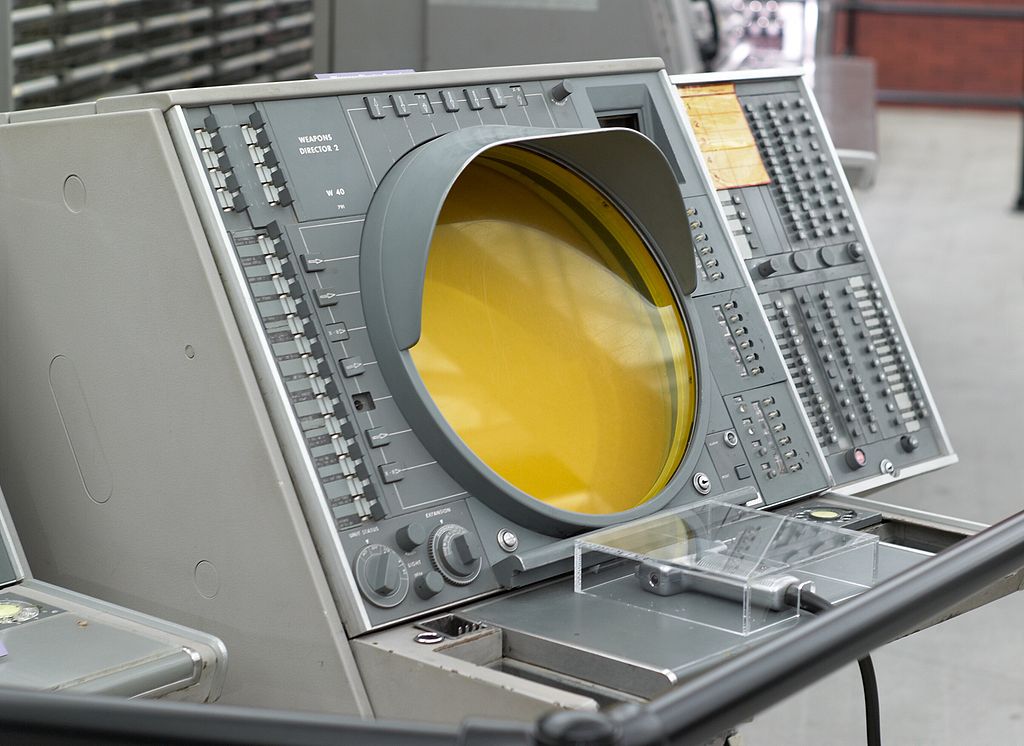
SAGE Operator Console
As part of the SAGE project (on the computerization of missile defense equipment), he worked with a group that dealt with the issue of the “human factor” (engineering psychology).
The SAGE system included computers that aggregated the data from many radars and presented them to the operator who made the decision how to react. Liklider was an expert in ergonomics and made sure that the human-computer interface has great potential.
A little video about SAGE:
At the beginning of his career, Liklider became interested in computer technology. The seminar of Norbert Wiener added fuel to the fire, where Liklider became infected with "cybernetics."
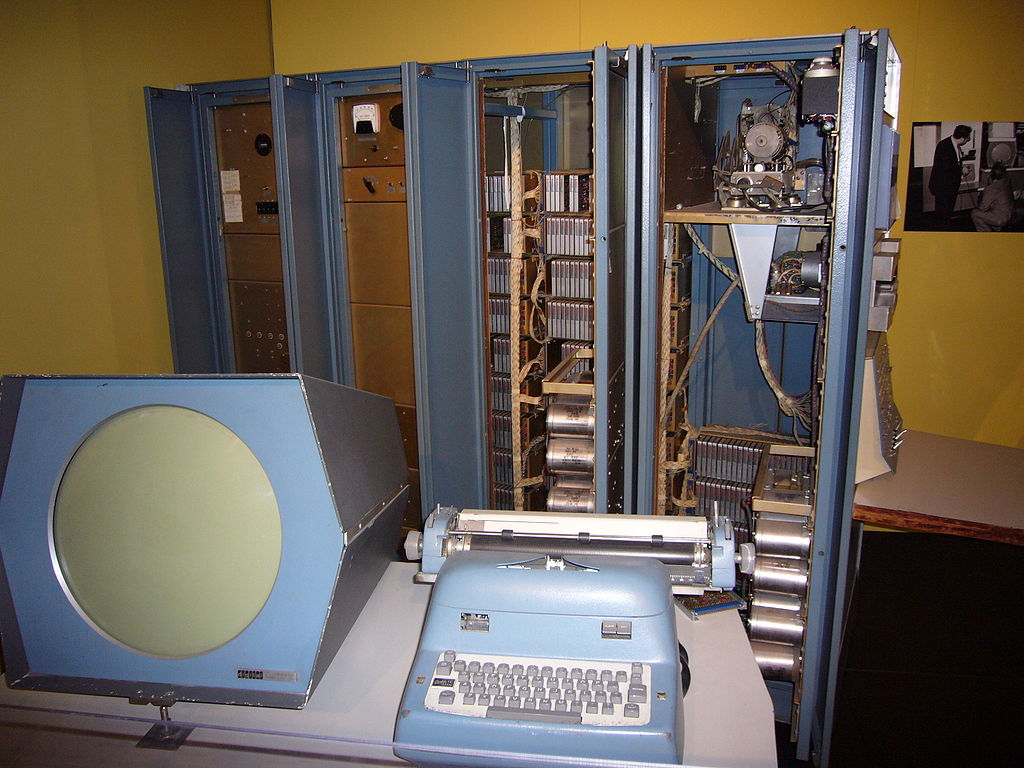
In 1957, Lyclider becomes vice president of Bolt Beranek and Newman, Inc. (BBN), a research center for military orders, where he acquired the first PDP-1 computer and first demonstrated the principle of time-sharing.
In 1959, Liklider, based on the experience gained with PDP-1, wrote the book “Libraries of the Future”, and in 1960, the article “Man-Computer Symbiosis”, an even more widely recognized article, was written. This essentially philosophical article contains speculative answers to some questions posed at one time at the first seminars organized by Norbert Wiener. The article became a kind of ideological basis for the creation of the first systems with time sharing, and subsequently for computer networks.
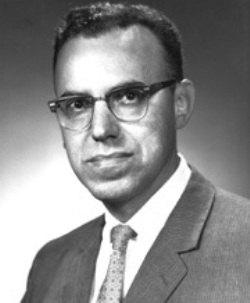 The published articles attracted the attention of the then ARPA director Jack Ruins (pictured), he set himself the task of not just improving the existing military computing systems, but of making a fundamental breakthrough in this area. By that time, it was obvious that the ways a person interacts with a computer (burst mode, perforation) is hopelessly outdated.
The published articles attracted the attention of the then ARPA director Jack Ruins (pictured), he set himself the task of not just improving the existing military computing systems, but of making a fundamental breakthrough in this area. By that time, it was obvious that the ways a person interacts with a computer (burst mode, perforation) is hopelessly outdated.
Liklider was one of the few who spoke about it, and the choice fell on him. He recalled his decision to accept the proposal:
“I realized that Jack was not only focused on the use of interactive computing for defense management, but much more broadly, so in October 1963 I moved to the Pentagon and became director of IPTO.”
PDF
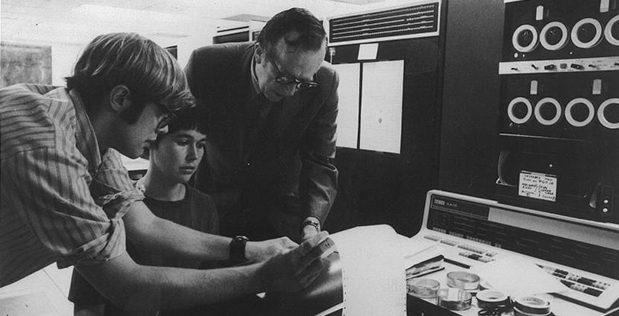
Unlike many AI supporters, Liklider never believed that there would be a war against machines. He wrote in an article: “People will set goals, formulate hypotheses, define criteria, and perform an assessment. Computers will do routine work to clear the path to discoveries in technical and scientific fields. ”

“People are noisy devices of a narrow range, but in their nervous system there are a great many parallel and simultaneously active channels. Regarding humans, computers are very fast and accurate, but they are limited by the ability to perform only one or more simple operations at a time. People easily adapt, having the ability to "program themselves according to circumstances", based on the incoming information. Computers are straightforward, limited by what is pre-programmed. ”
“I hope that a few years are left before the human brain and computers are closely connected, and the resulting partnership will think like the human brain can never, and process data in ways that are not known to us.”
“In a few years, a person will be able to communicate through a machine more efficiently than live. This is amazing, in general, but this is our logical result ... We believe that we are entering a technological era in which we will interact with an abundance of information not only in a passive way, as we are used to using books and libraries, but also as active participants in continuous process, bringing something into the process, interacting with the process itself, instead of just getting it. ”
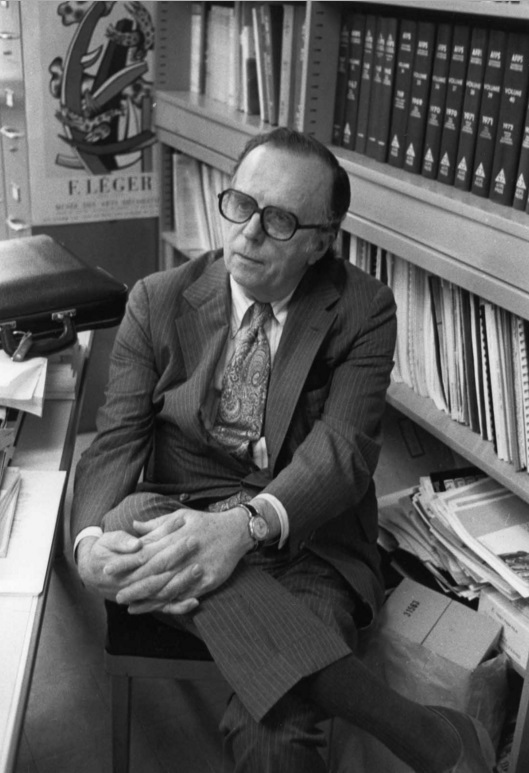
When Liklider was the director of IPTO, he started Project MAC. It is decrypted in different ways: “Man and Computer”, “Computer as a tool of cognition” (Machine-Aided Cognition) or, finally, “Computer with distributed access” (Multi-Access). MIT had a healthy mainframe, which was designed so that up to 30 users, each sitting at their own terminal, could work at the same time. Liklider also opened similar projects at Stanford, the University of California at Berkeley, and the University of California at Los Angeles.
As part of the MAC project, Minsky and McCarthy worked on artificial intelligence. Here they wrote the first lines of code for the Multics operating system .
The MAC project has become the world's first "online" community, in which there were prototypes of "chat", "email", "forums", and "free exchange of software."
Liklider made a half-joking mailing list addressed to Members and Affiliates of the Intergalactic Computer Network.
He outlined a picture of an open electronic intermediary system for the informational interaction of governments, institutions, corporations and individuals.
Liklider shares his memories of those times.
Together with Edison, we continue the spring publication marathon.
I will try to get to the bottom of the source of IT-technologies, to figure out how they thought and what concepts were in the minds of the pioneers, what they dreamed about, how they saw the world of the future. Why did they think about “computer”, “network”, “hypertext”, “intelligence amplifiers”, “collective problem solving system”, what meaning they put into these concepts, what tools they wanted to achieve the result.
I hope that these materials will serve as inspiration for those who are wondering how to go “from Scratch to Unit” (to create something that was not even mentioned before). I want IT and "programming" to cease to be just "coding for the bucket", and recall that they were conceived as a lever to changemethods of warfare, education, a way of joint activity, thinking and communication, as an attempt to solve world problems and respond to the challenges facing humanity. Something like this.
March 0 Seymour Peypert
March 1. Xerox Alto
March 2 "Call Jake." History of NIC and RFC
March 3 Grace “Granny COBOL” Hopper
March 4 Margaret Hamilton: “Guys, I'll send you to the moon”
March 5 Hedi Lamarr. And to shoot a movie in a naked movie and to shoot a torpedo at an enemy
on March 7 The magnificent six: girls who counted a thermonuclear explosion
on March 8 "Video games, I am your father!"
9th of MarchHappy Birthday, Jeff Ruskin
Bob Taylor

- He received a bachelor's degree in three areas at once: physics, mathematics, and psychology.
- He wrote the article, so he was noticed by the warrior scientists and invited to head the Information Processing Techniques Office (IPTO) , the DARPA division of behavioral sciences and "command and control."
- Initiated the development of the three major areas of IT: the first computer science departments at leading universities, the system time-sharing ( division of time ) and networking ( computer / computer network ).
- Found, supported and inspired Marvin Minsky , John McCarthy , Douglas Engelbart , Ivan Sutherland , Robert Taylor .
- He described the concepts of digital libraries, electronic commerce (e-commerce), online banking, cloud computing.
“What will be our overall communication picture of the world if we look into the future, say in 2000? Will it be a single universal network covering the entire globe, or a rigid structure consisting of separate networks, or, finally, a set of separate independent networks? But another alternative is not ruled out: a coherent system consisting of separate functionally connected but independent networks? This prospect is most likely. ”
Liklider, 1978
Psychoacoustics
Liklider was interested in the question of how consciousness extracts meaning from what it heard.
In the field of psychoacoustics, Liklider appeared in 1951 with the article “Duplex Theory of Pitch Perception” , which was then reprinted and quoted hundreds of times. This article has laid the foundation for speech recognition technology. He was elected President of the Acoustic Society of the United States.
Missile defense

SAGE Operator Console
As part of the SAGE project (on the computerization of missile defense equipment), he worked with a group that dealt with the issue of the “human factor” (engineering psychology).
The SAGE system included computers that aggregated the data from many radars and presented them to the operator who made the decision how to react. Liklider was an expert in ergonomics and made sure that the human-computer interface has great potential.
A little video about SAGE:
Information Technology
At the beginning of his career, Liklider became interested in computer technology. The seminar of Norbert Wiener added fuel to the fire, where Liklider became infected with "cybernetics."

In 1957, Lyclider becomes vice president of Bolt Beranek and Newman, Inc. (BBN), a research center for military orders, where he acquired the first PDP-1 computer and first demonstrated the principle of time-sharing.
In 1959, Liklider, based on the experience gained with PDP-1, wrote the book “Libraries of the Future”, and in 1960, the article “Man-Computer Symbiosis”, an even more widely recognized article, was written. This essentially philosophical article contains speculative answers to some questions posed at one time at the first seminars organized by Norbert Wiener. The article became a kind of ideological basis for the creation of the first systems with time sharing, and subsequently for computer networks.
 The published articles attracted the attention of the then ARPA director Jack Ruins (pictured), he set himself the task of not just improving the existing military computing systems, but of making a fundamental breakthrough in this area. By that time, it was obvious that the ways a person interacts with a computer (burst mode, perforation) is hopelessly outdated.
The published articles attracted the attention of the then ARPA director Jack Ruins (pictured), he set himself the task of not just improving the existing military computing systems, but of making a fundamental breakthrough in this area. By that time, it was obvious that the ways a person interacts with a computer (burst mode, perforation) is hopelessly outdated. Liklider was one of the few who spoke about it, and the choice fell on him. He recalled his decision to accept the proposal:
“I realized that Jack was not only focused on the use of interactive computing for defense management, but much more broadly, so in October 1963 I moved to the Pentagon and became director of IPTO.”
Man – computer symbiosis

Unlike many AI supporters, Liklider never believed that there would be a war against machines. He wrote in an article: “People will set goals, formulate hypotheses, define criteria, and perform an assessment. Computers will do routine work to clear the path to discoveries in technical and scientific fields. ”

“People are noisy devices of a narrow range, but in their nervous system there are a great many parallel and simultaneously active channels. Regarding humans, computers are very fast and accurate, but they are limited by the ability to perform only one or more simple operations at a time. People easily adapt, having the ability to "program themselves according to circumstances", based on the incoming information. Computers are straightforward, limited by what is pre-programmed. ”
original
"Men are noisy, narrow-band devices, but their nervous systems have very many parallel and simultaneously active channels. Relative to men, computing machines are very fast and very accurate, but they are constrained to perform only one or a few elementary operations at a time. Men are flexible, capable of "programming themselves contingently" on the basis of newly received information. Computing machines are single-minded, constrained by their „pre-programming." "
“I hope that a few years are left before the human brain and computers are closely connected, and the resulting partnership will think like the human brain can never, and process data in ways that are not known to us.”
original
"The hope is that, in not too many years, human brains and computing machines will be coupled together very tightly, and that the resulting partnership will think as no human brain has ever thought and process data in a way not approached by the information- handling machines we know today. ”
“In a few years, a person will be able to communicate through a machine more efficiently than live. This is amazing, in general, but this is our logical result ... We believe that we are entering a technological era in which we will interact with an abundance of information not only in a passive way, as we are used to using books and libraries, but also as active participants in continuous process, bringing something into the process, interacting with the process itself, instead of just getting it. ”
original
"In a few years, men will be able to communicate more effectively through a machine than face to face. That is a rather startling thing to say, but it is our conclusion ... And we believe that we are entering a technological age in which we will be able to interact with the richness of living information-not merely in the passive way that we have become accustomed to using books and libraries, but as active participants in an ongoing process, bringing something to it through our interaction with it, and not simply receiving something from it by our connection to it. ”
Project MAC

When Liklider was the director of IPTO, he started Project MAC. It is decrypted in different ways: “Man and Computer”, “Computer as a tool of cognition” (Machine-Aided Cognition) or, finally, “Computer with distributed access” (Multi-Access). MIT had a healthy mainframe, which was designed so that up to 30 users, each sitting at their own terminal, could work at the same time. Liklider also opened similar projects at Stanford, the University of California at Berkeley, and the University of California at Los Angeles.
As part of the MAC project, Minsky and McCarthy worked on artificial intelligence. Here they wrote the first lines of code for the Multics operating system .
The MAC project has become the world's first "online" community, in which there were prototypes of "chat", "email", "forums", and "free exchange of software."
Global computer network
Liklider made a half-joking mailing list addressed to Members and Affiliates of the Intergalactic Computer Network.
He outlined a picture of an open electronic intermediary system for the informational interaction of governments, institutions, corporations and individuals.
Liklider shares his memories of those times.
Together with Edison, we continue the spring publication marathon.
I will try to get to the bottom of the source of IT-technologies, to figure out how they thought and what concepts were in the minds of the pioneers, what they dreamed about, how they saw the world of the future. Why did they think about “computer”, “network”, “hypertext”, “intelligence amplifiers”, “collective problem solving system”, what meaning they put into these concepts, what tools they wanted to achieve the result.
I hope that these materials will serve as inspiration for those who are wondering how to go “from Scratch to Unit” (to create something that was not even mentioned before). I want IT and "programming" to cease to be just "coding for the bucket", and recall that they were conceived as a lever to change
March 0 Seymour Peypert
March 1. Xerox Alto
March 2 "Call Jake." History of NIC and RFC
March 3 Grace “Granny COBOL” Hopper
March 4 Margaret Hamilton: “Guys, I'll send you to the moon”
March 5 Hedi Lamarr. And to shoot a movie in a naked movie and to shoot a torpedo at an enemy
on March 7 The magnificent six: girls who counted a thermonuclear explosion
on March 8 "Video games, I am your father!"
9th of MarchHappy Birthday, Jeff Ruskin
